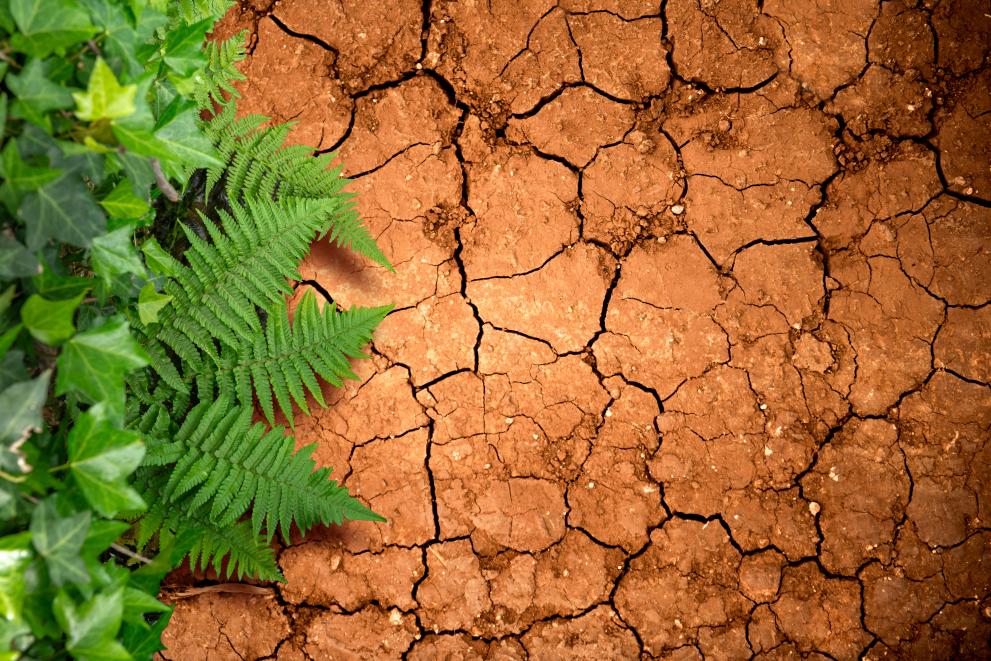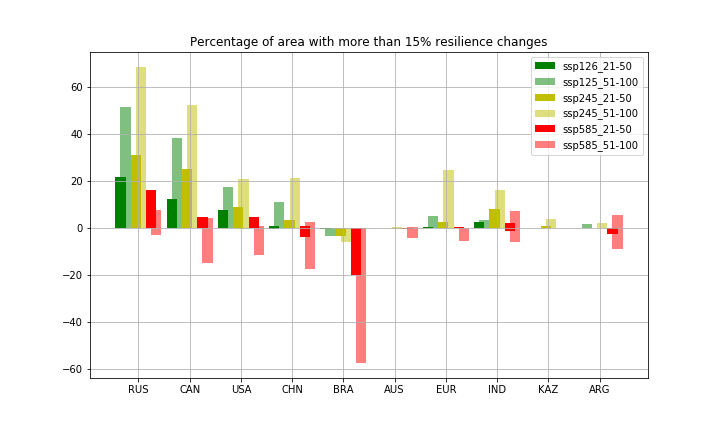
A recent article on the stability of terrestrial ecosystems under future climate scenarios warns of dramatic reductions in the resilience of vegetation productivity under high emission/low mitigation scenarios.
The estimated changes in resilience vary across the globe, depending on the greenhouse gas concentrations of the projected scenarios.
While most land areas will experience reduced vegetation resilience under higher emission scenarios, tropical regions and areas in the mid-latitudes are likely to be the most affected.
Possible tipping point for global vegetation productivity
Vegetation stability - a property commonly attributed to healthy ecosystems providing stable services – is favoured by climate change mitigation. Lack of vegetation stability could put large regions of the world at risk.
Such a tipping point is suggested by the article, unless lower emission pathways are pursued.
The authors investigated vegetation gross primary production (GPP) data simulated by a large ensemble of state-of-the-art Earth System Models (ESMs) involved in the Sixth Assessment Report (AR6) of the IPCC (2021).
Under the lower emission scenarios, the study found areas with increasing vegetation production resilience to be wider than in the areas with decreasing resilience. The situation drastically reverses under the higher emission (Fossil-fuel Development) scenario.
Annual Production Resilience Indicator
The vegetation GPP analysis is based on the Annual Production Resilience Indicator.
Originally developed for agricultural studies, this estimates the return period (inverse frequency) of years with large production losses for homogeneous production systems and of the effective diversity of complex production systems.
The paper shows the relative difference in the Annual Production Resilience Indicator computed using vegetation GPP data simulated for future periods (2021-2050 and 2051-2100) under three different Shared Socioeconomic Pathway (SSP) scenarios, compared to the reference period 1985-2014.
Future changes are estimated at the global level to stimulate common mitigation efforts, and for each world country to complement local impact assessments and adaptation plans.
Countries most at risk
The study focused on the largest world countries Russia (RUS), Canada (CAN), the United States of America (USA), China (CHN), Brazil (BRA), Australia (AUS), the European Union (EUR), India (IND), Kazakhstan (KAZ), and Argentina (ARG).
Among these, Brazil was found to be exposed to the highest risk of experiencing years with anomalously low GPP, especially under the highest emission scenario (ssp585 - Taking the Highway). Similar statistics for all world countries are available for consultation in the Supplementary Material of the Article.
The code used to compute the Annual Production Resilience Indicator is publicly available: Analysing the resilience of agricultural production systems with ResiPy, the Python production resilience estimation package

Policy implications
This analysis can help policymakers and stakeholders target those areas that require urgent improvements to adaptive capacity and resilience to climate-related hazards under different future climate scenarios.
Such interventions could help stabilise agricultural production and ecosystem services provided by natural vegetation, thereby mitigating risks to food security, agricultural employment and biodiversity.
Further information
- Rise and fall of vegetation annual primary production resilience to climate variability projected by a large ensemble of Earth System Models' simulations
- Estimating resilience of crop production systems: From theory to practice
- AR6 Climate Change 2021 – The Physical Basis
Related Content
Details
- Publication date
- 10 September 2021
